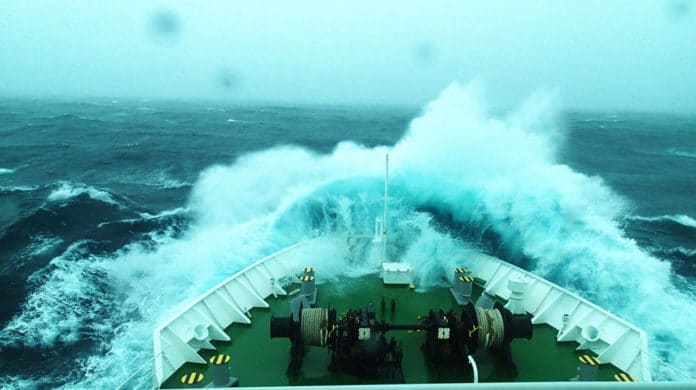When carbon dioxide (CO2) is absorbed by seawater, chemical reactions occur that reduce seawater pH, carbonate ion concentration, and saturation states of biologically essential calcium carbonate minerals. These chemical reactions are termed ocean acidification.
Ocean acidification produced by the dissolution of anthropogenic carbon dioxide (CO2) emissions in seawater has profound consequences for marine ecology and biogeochemistry. In the past two centuries, the oceans have absorbed one-third of CO2 emissions, altering ocean chemistry, reducing seawater pH, and affecting marine animals and phytoplankton in multiple ways.
According to a study published in 2011, ocean acidification is lowering the rate at which nitrous oxide (N2O), an ozone-depleting greenhouse gas (also known as laughing gas), is being produced naturally. Based on this study, it was thought that acidification decreases the natural production rate of N2O.
However, a new study by the EPFL, Tokyo Institute of Technology and Japan Agency for Marine-Earth Science and Technology (JAMSTEC) have discovered that the process appears to work the other way around, as well.
For the study, scientists took measurements in the Pacific Ocean, off the coast of Japan, between 2013 and 2016. They found a lower pH of water in the subarctic region of the Pacific – near Hokkaido and the Kuril Islands. Meanwhile, a significant increase in N2O production.
If pH levels keep falling at the current rate, or 0.0051 units/year – assuming there is no decrease in CO2 emissions– the N2O production rate in that part of the Pacific could rise by 185% to 491% by 2100. And the greenhouse gas effect of N2O is 298 times greater than that of CO2.
After collecting samples from five different sites off the coast of Japan, scientists lowered the samples’ pH levels using a natural process whereby microbes in the water convert ammonium into nitrate, which generates N2O as a by-product. The noted- decrease in the ammonium-to-nitrate conversion rate leads to increased N2O production.
Florian Breider, the study’s lead author and head of EPFL’s Central Environmental Laboratory (CEL), said, “Our study provides additional proof that rising CO2 emissions are disrupting natural biogeochemical cycles, which are highly sensitive to changes in the environment. However, our conclusions are valid only for the part of the Pacific that we examined. Additional research is needed to see whether the same process is occurring in other parts of the world.”
According to Breider, developing models of this process that take into account all environmental variables, scientists could obtain important information for orienting future research. The models address other compounds besides N2O since many methods are still unknown.
Breider said, “Our study shows that under the right conditions, one greenhouse gas can increase the production of another, more damaging one. So we must keep researching this area.”
The study has just been published in Nature Climate Change.
